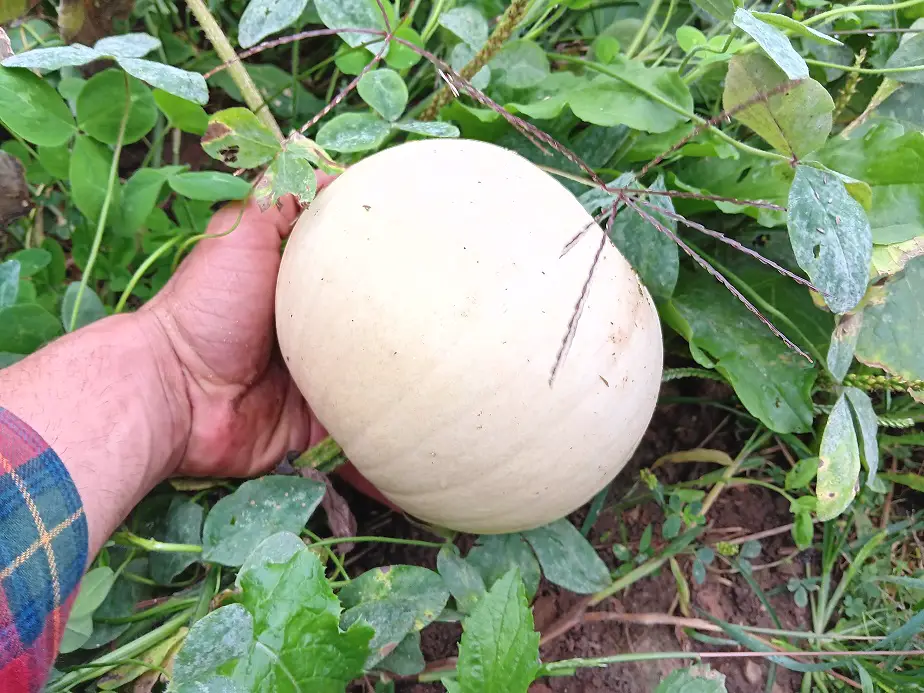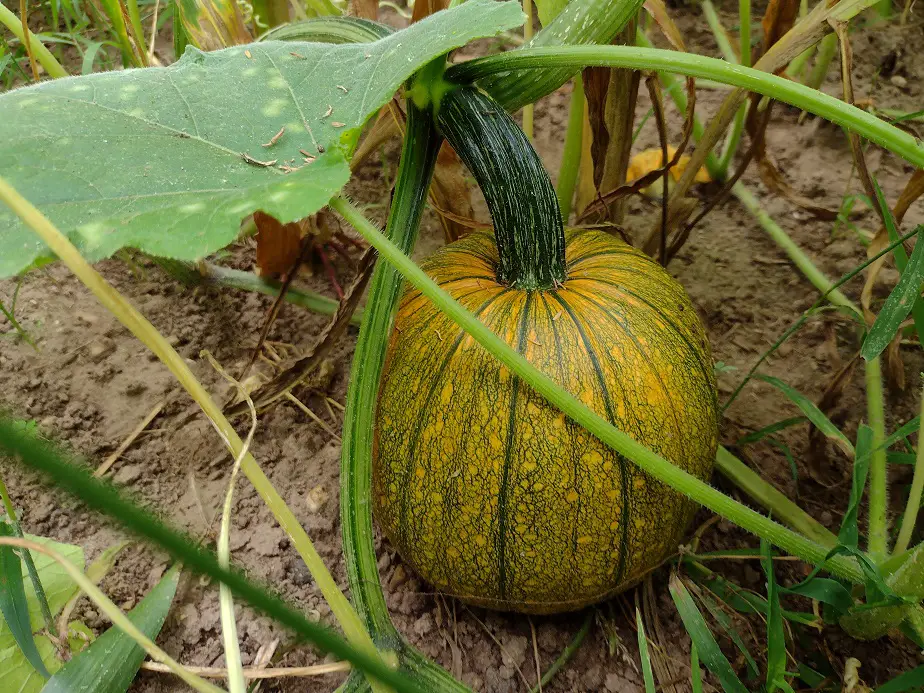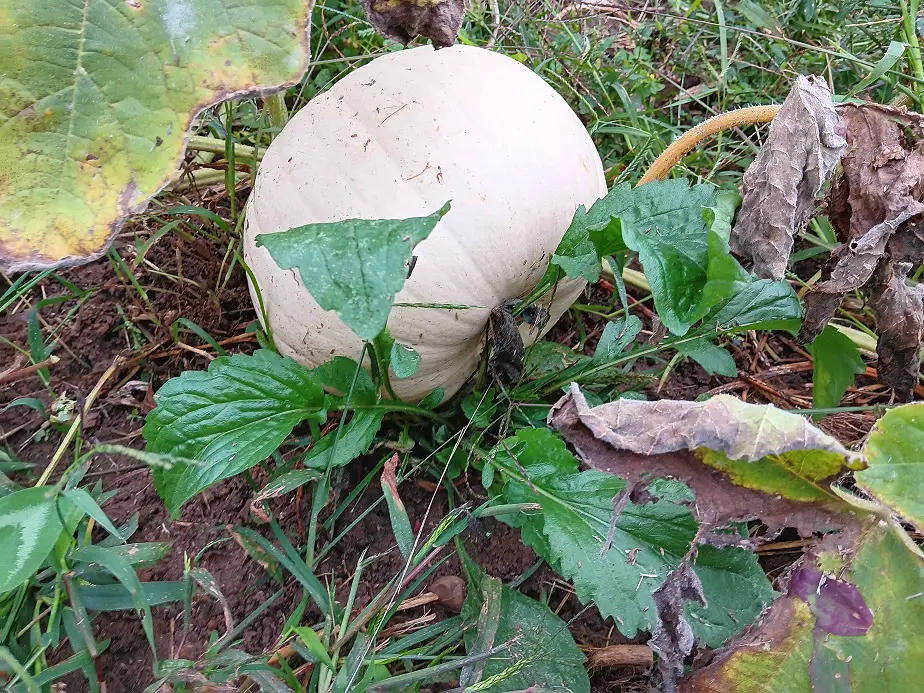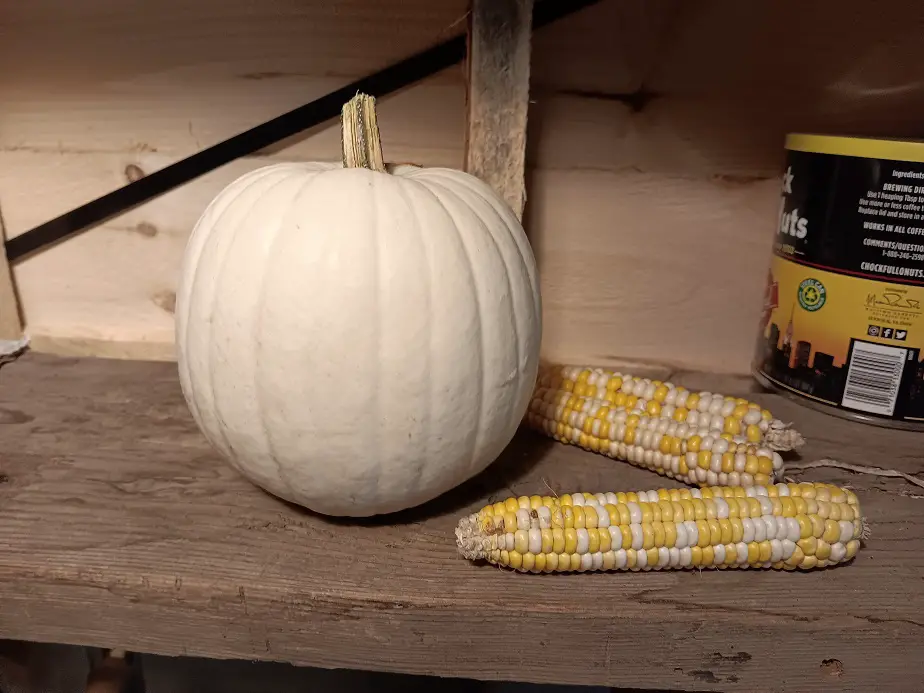I’ve found that nice, large pumpkins only come with good fertilizer use.
The best fertilizer for pumpkins is Trifeca Plus or a good manure. A fertile biochar is also a great option. The most common fertilizers are even blended synthetics like 10-10-10 and 20-20-20. Don’t use Miracle Grow because it’s too high in nitrogen for good pumpkins.
I love pumpkins and other winter squashes. Let’s talk about their nutrient needs and fertilizing them properly.
The Best Type of Fertilizer for Pumpkins
Manure is my favorite fertilizer for pumpkins. I am a huge fan of manure. The world is full of it, it’s cheap, and it grows good plants. Now, I know that not everyone has the ability to easily get fresh or aged manure, but that’s the primary fertilizer we use on our homestead.
George Washington Carver once said that the very best pumpkins grew next to a manure heap, and I concur. Manure is rich soil-benefiting microbial life and it encourages higher amounts of mycorrhizal fungi. It’s got a good blend of the right plant nutrients pumpkins need.
Manure has all of the macro and micro nutrients that plants need. It helps with remineralization of worn soils and greatly conditions and improves poor soil. It can be used fairly heavily, but it’s best done heavily in the fall and spring.
Don’t apply it much during the growing season unless it’s old manure being used as a mulch or if you’re trying to make a liquid extraction from a fresher manure. A liquid extraction, called manure tea, can be a decent fertility boost for your garden.
We pile up a nice mound of manure every year and sometimes buy more from our neighborhood farmers. If you know a friend with animals, even small ones like rabbits, ask if you can get a bucket full from them I can absolutely grow the best pumpkins with a full bucket or two of good manure.
Most lesser-quality, old manures are low-strength but a little fertilizer can be added to it to make it super poop.
You can buy pelleted chicken manure from many larger garden centers or online. It’s actually really great stuff and I know two produce farmers who use that exclusively as their fertilizer. It should have some directions for application on the bag.
Manure usually has nitrogen content between 1 and 3 percent. The older stuff being weaker. That would make a difference on how much you’d need or if you may want to add a little additional fertilizer.
Here’s an in-depth article I wrote on using manure properly in your garden.

10-10-10 Fertilizer for Pumpkins
The most common fertilizer used for pumpkins is an even blended synthetic fertilizer like 10-10-10 or 20-20-20. They are strong and if you’re not careful, you can harm your soil and plants. It’s easy to apply and work in the soil. It can be good, but it doesn’t add to the organic matter or beneficial soil life.
The numbers denote the percentage by weight of Nitrogen-Phosphorus-Potassium. Stronger fertilizers are broadcast thinner and have a higher risk of burning off beneficial bugs and soil microbes, as well as harming plants. Be careful with them.
Pumpkins usually get up to 100 pounds of Nitrogen, phosphorus, and Potassium per acre, or about a pound per 400 square feet. That would be a 20-foot square garden. To get one pound of nitrogen, you’d need 10 pounds of 10-10-10 or 5 pounds of 20-20-20.
That comes out to about 1 once each of Nitrogen, Phosphorus, and Potassium per plant with standard plating. If you really get I into it like many professional growers do, you would add 3/4 of the prescribed nitrogen, half the potassium, and all the phosphorus in the first 30-45 days of plant growth. Then, a month later, add the remainder of the fertility.
Some growers apply it up into 3 or 4 applications. The more applications, the less fertilizer is wasted. But you really need to be mindful of how much you’re putting on when. A lot of the pros will mix up their own custom blend with the base synthetic ingredients. That’s what I do when we do use a synthetic.
But, in recommending a “best fertilizer” I should try and keep it to just one product to make it simple.
Generally, synthetic fertilizer is recommended to be applied to pumpkins twice a year. Once at planting, about 1/2 to 2/3 of the full needed amount. Make sure not to get it too close to the seeds. Then approximately a month later apply the rest of the amount between plants, or about a foot away from the base of the plants.
I prefer when using a synthetic fertilizer, to water it in. I’ll dissolve it all in water in a barrel and use a watering can to disperse it along my garden rows. I just measure out the fertilizer I need, add it to a decent amount of water (up to 2 cups in 5-gallons), and put it where it needs to go.
After that, I still turn on the sprinklers to soak the ground a bit more. Synthetic fertilizer is strong but it’s a lot less harsh when watered in right away.

Trifecta Plus by MIgardener
Trifecta Plus is a fertilizer made for the home gardener who wants to avoid synthetic fertilizers and also wants to boost and improve the quality and grade of their soil. It contains all organic ingredients and is intended for organic gardening, even though it’s not on the organic approved list yet.
It contains a wide assortment of natural ingredients for both fertilization and remineralization of worn soils. It also contains soil conditioners and organic carbon for the soil. It’s about half the strength of a 10-10-10. I would use three handfuls per plant, or 3/4 cup, all in the beginning of the season.
It’s a slow-breakdown, slow-release fertilizer and it’s a bit low in nitrogen, so going a little less precise isn’t going to hurt things.
Biochar Fertilizer for Pumpkins
A good biochar with a decent fertility and beneficial microbes would be one of the best options for fertilizing pumpkins. Most biochar isn’t fertile but some have a lot of plant nutrients added. The biochar I make and sell can be used as a mild fertilizer, super soil amendment, and soil health boost.
My biochar is created from native hardwood tree trimmings, washed to remove all potash, then inoculated with a rabbit manure tea and my own cultured lactobacillus which improves soil structure in your garden.
Biochar is just a type of smaller particle charcoal with a fancy marketing name. I make mine with superior water-holding capacities which makes it ideal for home gardens, raised beds, and large containers. I use it in potting soil we mix for the tomato plants we sell in the spring.
Any biochar will provide a slew of benefits to your soil. But, most do come empty. That is, void of nutrients but with a negative charge that will cause it to take up fertility in the soil and give it up slowly. If you apply a lot of empty biochar, you will probably need to apply extra fertilizer at first to balance it out.

Pumpkins Need Mid to Low-Nitrogen Fertilizers
Pumpkins need a fair amount of nitrogen, but only for about half of their growing season. by the tie the vines are blossoming, The soil should have used up a majority of it’s free available nitrogen. If there’s too much nitrogen when the plant is read for the fruiting stage, it severely impacts the total yield.
Highly nitrogenated pumpkin plants grow bigger leaves and vines but put out fewer blossoms and grow smaller fruit. An over application of nitrogen can actually end up in not a single pumpkin being formed. Thankfully, nitrogen is fleeting and is applied early, not much should be around by that time.
Don’t apply a nitrogen-high fertilizer after the first 30 days of emergence. I don’t really recomend using a fertilizer like that at all anyways. Pumpkins don’t need it.
Pumpkins Thrive in Heavy Organic Soil
The Native Americans understood that pumpkins do best in heavy organic oils. A good soil is nice, rich, and black. If yours isn’t. Consider adding in whatever you can find that will break down and turn to compost in the soil. Or, just create a compost pile and add the finished product directly.
You can also purchase compost. If you use manure, you won’t need to add anything else for organic matter.
Related Articles:


